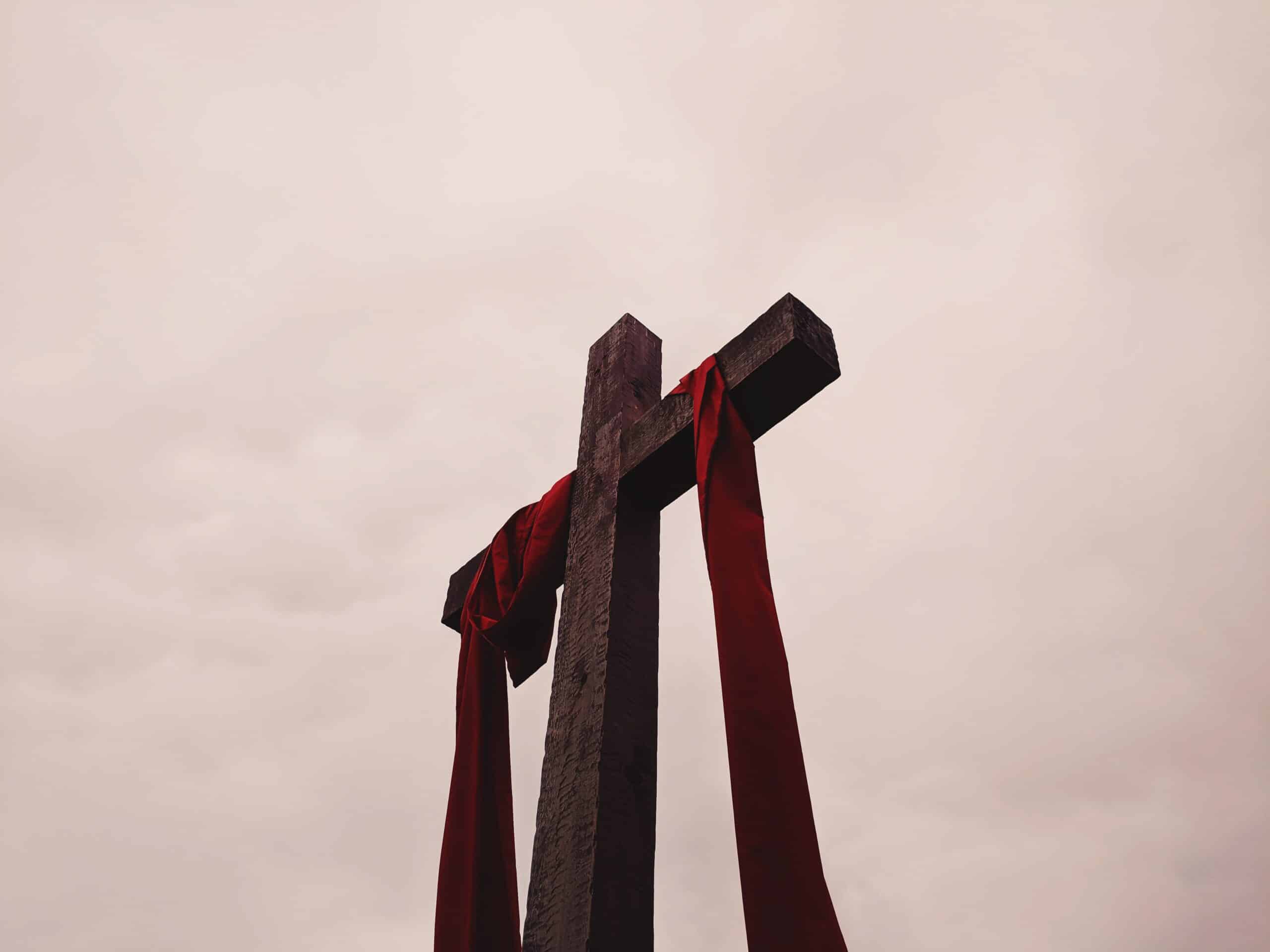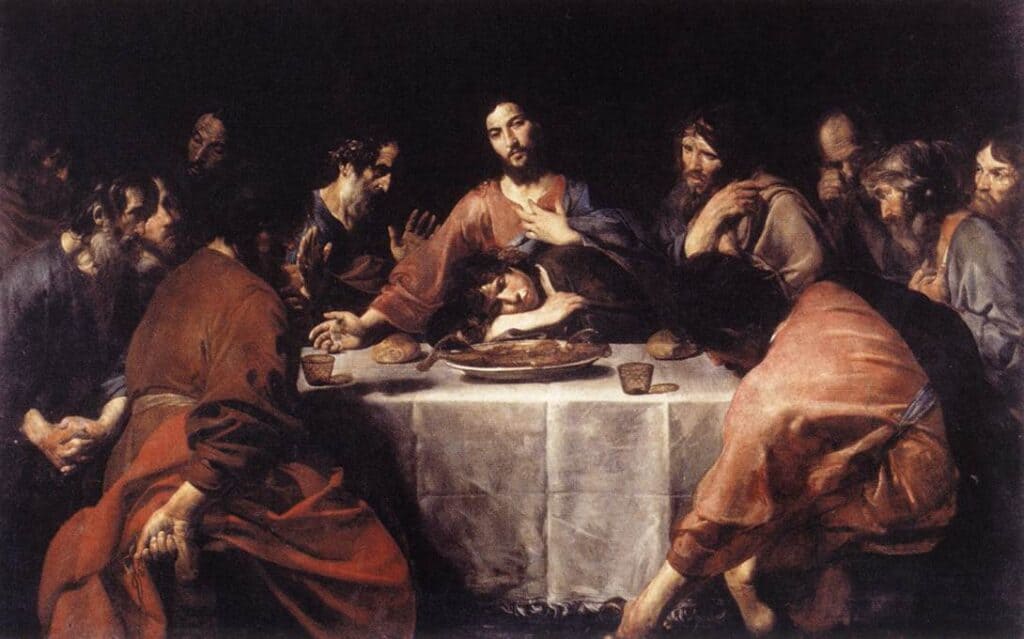The Spiritual Exercises of St. Ignatius Loyola are specifically designed into four separate weeks which move the person praying them to grow in interior freedom to respond to God’s call. St. Ignatius writes in the very first paragraph that Spiritual Exercises are “every way of preparing and disposing the soul to rid itself of all inordinate attachments, and, after their removal, of seeking and finding the will of God in the disposition of our life for the salvation of our soul.” In other words, the Spiritual Exercises help us find the freedom to follow Christ.
The First Week is about confronting the reality of sin in the world and especially in ourselves to more clearly grasp God’s great love for us in Christ. In the Second Week, we follow Jesus Christ in his earthly ministry so that we can know and love him and decide to serve him with our lives. The Third Week is following Christ in the most difficult hours of his life—it is about experiencing the Passion and death of our Lord. It is, essentially, praying through the events of Holy Week.
This prayer leads the retreatant to experience the events of the Passion—to move from the head to the heart. The grace we pray for in the Third Week is “sorrow, compassion, and shame because the Lord is going to His suffering for my sins.”1 We witness the suffering and death of Jesus, the friend that we’ve come to know in the Second Week, as he shows us the love and mercy of God, which we contemplated in the First Week.
The text of the Third Week of the Spiritual Exercises is rather sparse. It begins with the Last Supper and ends with Jesus’s burial in the tomb. Ignatius emphasizes the importance of both prayer repetitions and what he calls the “application of the senses.” The retreatant is called to end each period of prayer with a “colloquy,” or conversation, with Jesus about what took place in prayer.
Many of us are familiar on some level with the events of Christ’s Passion and Death. We might be tempted to move through them quickly, but the Third Week gives us an opportunity to go deeper into these events so that we experience them in a new way. Use your familiarity with the story and imagine them in detail and depth. This explainer aims to provide a guide to praying during the Third Week. We will begin with the Last Supper, then go with Christ and the Apostles to the garden of Gethsemane, and finally go with Christ in his arrest, trial, and crucifixion.
*******
The Last Supper
The first point of this prayer is for us to sit with Christ and the Apostles in the upper room during the Last Supper. We’re to “see the persons at the Supper, and to reflect upon [ourselves].”2
This sounds like such a simple direction that I’m tempted to rush past this point, but there’s so much fruit we can reap from reading the room during the Last Supper. Jesus is gathered there with his closest friends and followers. As we direct our imaginative gaze about the room, what is the body language of the group gathered there? Are some laughing while others are more solemn? What does Jesus look like as he sits and speaks with those around him?
The next point, Ignatius invites us to actually listen in on the conversation Jesus and the Apostles are having during that Last Supper. Of course, we are familiar with Jesus’s words at the institution of the Eucharist (“This is my body…this is my blood…do this in remembrance of me”). But Ignatius is inviting us to listen to the conversation throughout the Last Supper. Our imagination is allowed to go beyond the confines of what’s written in the gospels. For example, we may hear Jesus recounting various memories with his friends. Perhaps we hear Judas in the corner complaining about finances to a brother apostle who’d much rather be talking about something else with someone else. Or maybe we see and hear Jesus listening as one of the apostles shares a story with him. We can imagine how Jesus looks at the apostle or the sound of his laugh.
Next, we’re invited to consider how Jesus is suffering even at this moment. He knows it’s the last meal he will have before undergoing the Passion. What love must he be feeling in his? And with this love, what great sadness must have plagued him then? How extraordinary is it that the God of the universe would choose to endure such terrible pain? Even as we ponder Christ’s suffering, Ignatius directs us to then “strive to grieve, be sad, and weep” and to allow that feeling to permeate the rest of our prayer.
At the end of this prayer, Ignatius leads us to ponder what we should do and suffer for Christ who suffered so much for our sake. To end the prayer period, we’re to have a colloquy with Jesus about what took place in our imaginative contemplation.
In repetitions, we might focus on different details, people and events. We might witness Jesus washing the feet of the disciples or taste the bread of the Eucharist for the first time.
Agony in the Garden
 The next gospel scene we pray through in the Third Week is the Agony in the Garden. We picture Jesus going to the Mount of Olives, bringing with him Peter, James, and John. There he enters into agonizing prayer as he commits to do the Father’s will. The particular grace we ask for in this prayer is to share with Christ in his sorrow, anguish, tears, and grief.
The next gospel scene we pray through in the Third Week is the Agony in the Garden. We picture Jesus going to the Mount of Olives, bringing with him Peter, James, and John. There he enters into agonizing prayer as he commits to do the Father’s will. The particular grace we ask for in this prayer is to share with Christ in his sorrow, anguish, tears, and grief.
This grace is particularly important for us to receive so that we can come to a deeper knowledge of Christ. Jesus is not a Stoic philosopher. While he may be God incarnate, he is not fearless. We can imagine these feelings Jesus is experiencing by considering those times in our life when we waited to enter into some kind of suffering. That may be surgery, the death of a loved one, or a time away from family. Whatever it is, the feelings we get during those difficult moments are what Jesus acutely felt as he prayed before his arrest in the garden. Can you feel what Jesus felt?
There are plenty of other events in the garden that will be fruitful to our prayer: the apostles dozing off as Jesus sweats drops of blood in his prayer, Peter cutting off the servant’s ear and Jesus subsequently healing that ear, Judas’s kiss, and so much more. As we imagine these events, we can ask various questions to help us dig into the experience of Jesus and his friends: How does Jesus feel to find that the apostles can’t stay awake to pray with him? What is it like to watch Jesus pray so intently that he sweats drops of blood from his face?
We should also consider details that are easy to overlook because we don’t read about them in the passage. For example, we may look into the face of Jesus as Judas kisses him in betrayal. Or we may imagine what Peter is feeling after Jesus orders him to put down his sword. We could perhaps even imagine what the guards are feeling and thinking as they arrest this itinerant preacher they’ve heard so much about.
The Trial and Crucifixion
 St. Paul says in the First Letter to the Corinthians, “[if] Christ has not been raised [from the dead], then empty is our preaching; empty, too, your faith.” Christ, the Son of God, the second person of the Trinity, really died. He was buried in a tomb. And it was devastating to his mother, apostles, friends, and followers. Jesus died, and we need to fully embrace this reality, for according to St. Paul’s logic above, our faith is empty if Christ didn’t really experience death. We might be tempted to move quickly through Jesus’ crucifixion and death, skipping ahead to the Resurrection. We need to stay in this moment and ponder the cross. Just as we cannot skip through our own moments of pain and suffering, we need to remain with Jesus in these agonizing moments. It is here that we come to know the great depth of the love of Jesus for, “no one has greater love than this, to lay down one’s life for one’s friends.” 3
St. Paul says in the First Letter to the Corinthians, “[if] Christ has not been raised [from the dead], then empty is our preaching; empty, too, your faith.” Christ, the Son of God, the second person of the Trinity, really died. He was buried in a tomb. And it was devastating to his mother, apostles, friends, and followers. Jesus died, and we need to fully embrace this reality, for according to St. Paul’s logic above, our faith is empty if Christ didn’t really experience death. We might be tempted to move quickly through Jesus’ crucifixion and death, skipping ahead to the Resurrection. We need to stay in this moment and ponder the cross. Just as we cannot skip through our own moments of pain and suffering, we need to remain with Jesus in these agonizing moments. It is here that we come to know the great depth of the love of Jesus for, “no one has greater love than this, to lay down one’s life for one’s friends.” 3
Our prayer with the scenes of Christ’s crucifixion should help us know the experience of the Blessed Virgin Mary and the other women who remained at the foot of the cross. We should ponder our Blessed Mother’s face as she looks up at her son. Perhaps we know what it’s like to lose a loved one before they’ve finished or even entered the prime of their life. We can even imagine what the apostles must be feeling at that moment. We might imagine them looking on from a distance. The trauma of seeing Jesus hanging from those wooden beams must have been unbearable. We can imagine Peter weeping bitterly for denying his Lord and for breaking his promise that he would die with Jesus.
As in the other prayers, we should apply our senses to our prayerful so we can imaginatively hear the jears of the crowd, the weeping of Mary and the other women, and Christ’s words from the cross to his mother and to the repentant thief. We may even struggle under the dead weight of Jesus’s limp body as he’s taken off the cross and moved to the tomb. Or perhaps we may see the stone being rolled in front of the tomb’s entrance and hear the sound of stone scraping upon stone. As we pray through these scenes, we should feel the (apparent) finality of not only Christ’s death but death itself.
********
The Third Week of the Spiritual Exercises is perhaps the most difficult week to immerse ourselves in. The graces we pray for (sorrow, grief, and tears) don’t immediately seem so graceful. But if we allow ourselves to enter into the misery of Christ’s Passion and death, then we can rejoice even more in the miraculousness of his Resurrection and everything that comes after.



